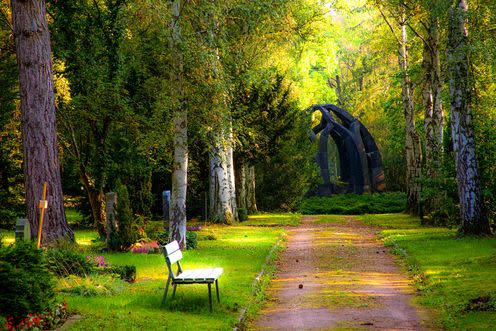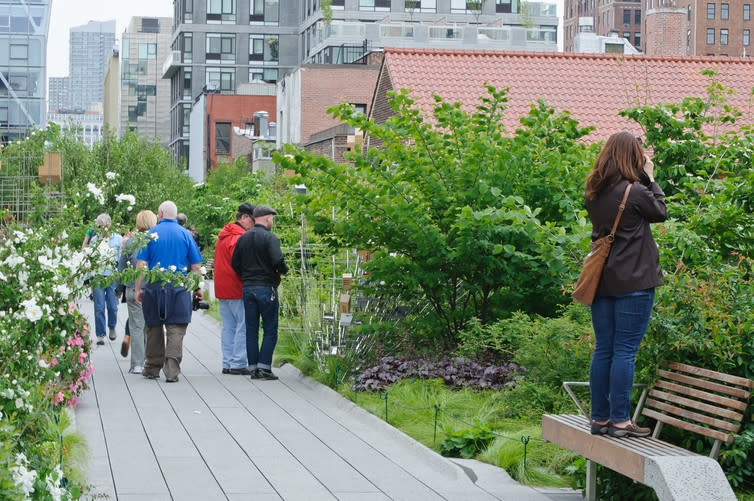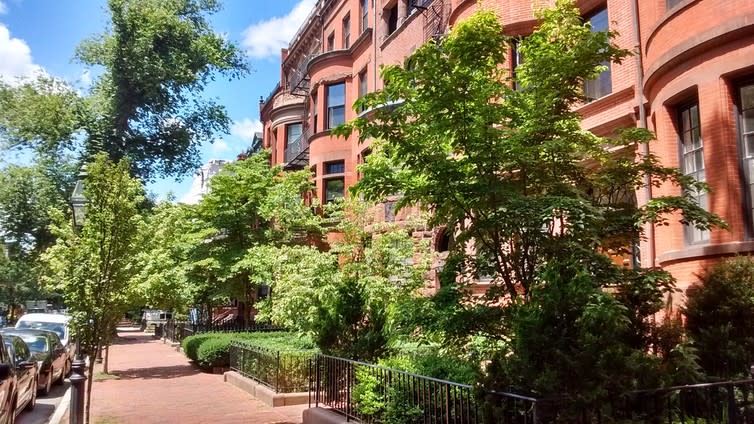How tranquil spaces can help people feel calm and relaxed in cities

When you think about somewhere that is tranquil, what do you imagine? Whether it’s a wide open meadow, a deserted beach, or a river as it lazily flows along on a warm summer’s afternoon, research shows tranquillity is mainly found in natural outdoor environments.
These tend to be places where man-made noise is at a low level, but where natural sounds – such as bird song – can be relatively high. Such studies have also shown a link between these types of environments and levels of relaxation, stress reduction and even longevity and pain relief.
It’s clear then that tranquil spaces are good for your health – and yet the world’s population is becoming increasingly urban. There are more trucks, cars, and motorcycles on the roads than ever before resulting in higher levels of noise, pollution and litter. If you live in a busy city, finding tranquillity in your daily life can be a challenge.
Maximum tranquillity
To find out what actually makes somewhere tranquil, we developed the Tranquillity Rating Prediction Tool. The tool measures two factors, the level of man-made noise – usually traffic – as well as the percentage of natural and contextual features in view. This includes things like if a place has a water feature, and lots of greenery. or if a place gives you a view of a religious or historic building – all of which our research shows help to boost the tranquillity of a place.
Based on these factors, the tool can predict the tranquillity of a place on a scale of 0-10. This is based on laboratory studies where people were asked to rate video clips of a range of environments for tranquillity levels. These clips included diverse settings, from a busy market place to natural coastal locations far from any development. Using this method we can not only identify existing (and sometimes overlooked) tranquil spaces, but also offer advice on how urban areas can be made more tranquil.

Our research shows that green spaces on side roads, which are often hidden from view, tend to have high levels of tranquillity due to the screening effects of buildings from the noise of busy streets. Pedestrianised squares in towns and cities were also shown to be acceptably tranquil because of the distance from traffic – some of these squares also featured grass and trees.
Similarly, well-maintained side streets – especially with avenues of trees – or heritage buildings can also score highly due to good visual attributes combined with low traffic noise. Close proximity to water was also shown to be good for tranquillity because it is naturally nice to look at and is relaxing to listen to.
Creating tranquil spaces
To boost the tranquillity of an area, the first step is to reduce man-made noise. Obviously on a city scale this could be done by things like rerouting traffic, lorry bans and low-noise road surfacing, as well as noise barriers. But in terms of your own surroundings, anything you can do to reduce unnatural noise the better. Higher and longer fences and walls next to the road can help here. As can creating a small quiet area with perhaps a natural-sounding water feature close by.
Increasing the percentage of natural features through “greening” can also help to boost the tranquillity of an area. Introducing more trees, shrubs, or trellising to “hide” building facades, makes people feel less stressed and calmer in their surroundings – so go wild with the greenery.

Having “natural” sounds can also help to make a place feel more tranquil. This could be done by installing a water feature or pond. This which will not only help in terms of relaxation but it will also encourage water fowl and birds.
What all this shows is that creating a refuge from the din of city life doesn’t have to be a huge task. And it is often neglected green spaces that can be re-imagined as havens of tranquillity.
So next time you’re feeling stressed out, try and find a tranquil space, or even better make one of your own – that way your can get your little bit of calm anytime you want.
This article was originally published on The Conversation. Read the original article.

Greg Watts does not work for, consult, own shares in or receive funding from any company or organisation that would benefit from this article, and has disclosed no relevant affiliations beyond the academic appointment above.

 Yahoo News
Yahoo News 
